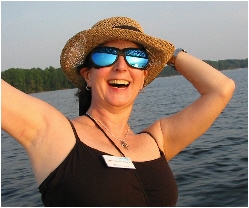| The problem, known as Kato's Conjecture, applies to the theory of waves moving through different media, such as seismic waves traveling through different types of rock. It bears the name of Tosio Kato, a now-deceased mathematician at the University of California-Berkeley, who posed the problem in research papers first written in 1953 and again in 1961. Part of the problem, called the one-dimensional version, was solved about 20 years ago. Though it was a breakthrough, work remained. Hofmann solved the problem in all its dimensions in a 120-word paper that he wrote with several colleagues -- Pascal Auscher, Michael Lacey, John Lewis, Alan McIntosh and Philippe Tchamitchian. "Philosophically, the reason research in math matters is that by pursuing math ideas that are deep and interesting for their own sake, you will get real-world applications in the future," Hofmann said. "It is like making investments." Theodore Slaman, chairman of the Department of Mathematics at the University of California-Berkeley, said solving a problem as old as Kato's Conjecture "is like finding the Holy Grail." |

Kato's Conjecture SolvedQuicklink Submitted By Amanda Lang No comments
|
|
| Rate It | View Ratings |
OpedNews volunteer from 2005 to 2013.
Amanda Lang was a wonderful member of the Opednews team, and the first volunteer editor, for a good number of years being a senior editor. She passed away summer 2014.
The views expressed herein are the sole responsibility of the author
and do not necessarily reflect those of this website or its editors.

OpEdNews depends upon can't survive without your help.
If you value this article and the work of OpEdNews, please either Donate or Purchase a premium membership.
STAY IN THE KNOW
If you've enjoyed this, sign up for our daily or weekly newsletter to get lots of great progressive content.
If you've enjoyed this, sign up for our daily or weekly newsletter to get lots of great progressive content.
To View Comments or Join the Conversation:



